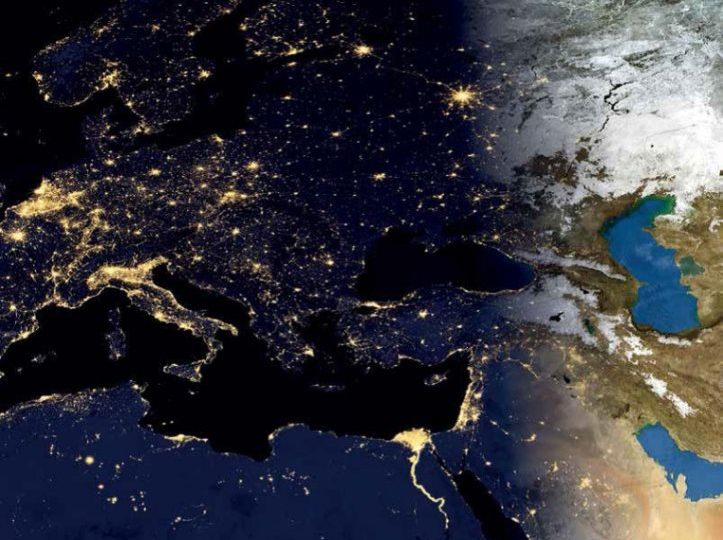AZERBAIJAN IS TURNING INTO THE MAIN GEOECONOMIC VECTOR of energy supply for Europe. The South Caucasus Pipeline (SCP), the Trans Anatolian Pipeline (TANAP), and the Trans Adriatic Pipeline (TAP) – together these Shah Deniz Stage II projects form the ‘Russian dependency escape Corridor’ – the so-called Southern Gas Corridor. This ambitious undertaking, which will connect gas supplies in the Caspian region to markets in Europe for the very first time, is set to change the energy map of Europe. The first gas production is targeted for late 2018, with supplies to Georgia and Turkey. Gas deliveries to Europe are expected just over a year after the first gas is produced off the shore of Azerbaijan.
Before it happens however, Shah Deniz Stage II envisions the construction of two new bridge-linked offshore platforms, and 26 gas production wells, which will be drilled with two semi-submersible rigs. 500 kilometers of sub-sea pipelines will link the wells with the onshore terminal. In addition, an upgrade of the offshore construction vessels is planned, and in order to accommodate the new gas processing and compression facilities, the expansion of the Sangachal terminal will also take place.
Azerbaijan entered the global market as a gas importer back in 2006 when the country signed a memorandum of understanding in the field of energy with the European Union (EU). Nowadays, EU is the biggest oil (82%) and gas importer (57%). Europe imports 53% of all the energy it consumes at a cost of more than €1 billion per day. Energy also makes up more than 20% of total imports. With its prosperity hinging on a stable and abundant supply of energy, the EU works to secure supplies from sustainable and reliable sources at competitive prices. In this context, Europe heavily relies on natural gas, which is not only an energy source, but a raw material as well. In comparison with electricity, natural gas may be stored, so from this vantage point, logistics issues like its production and distribution are more convenient. One of Europe’s main energy security threats comes from the fact that Russia is the continent’s main gas supplier. In response to concerns surrounding the delivery of Russian gas via Ukraine, the EU launched its energy security strategy in 2014. This strategy lays out protective measures such as increasing energy efficiency, increasing indigenous energy production and completing missing infrastructure links to redirect energy to where it is needed during a crisis. The EU is also working on the diversification of supply sources and the construction of fluid-gas terminals. Despite the existence of gas fields in North Sea, the EU is highly dependent on imported gas. In 2014, Russia and Norway comprised 80% of total EU imports, up from 64% in 2010.
The demand for gas supply in Europe is expected to increase by an average of 1-2% per year until 2030 (from 541 billion cubic meters to 744 billion cubic meters). Europe needs to establish new sources of gas to meet its long-term energy demands, replace its own declining levels of energy production, fuel economic growth and diversify energy supplies. Natural gas is expected to play an increasingly important role in the European energy mix for decades to come. As the cleanest fossil fuel, it has clear environmental advantages over other energy sources such as coal and oil. Also, it provides an important and flexible energy option in conjunction with renewable energy. The proven energy resources in the Caspian Sea present an enormous opportunity for Europe to meet its energy challenges.
Azerbaijani gas from the Caspian region – especially the Shah Denizgas field – is considered by many as one of the major alternatives for Europe’s energy safety. Shah Deniz Stage II gas will make a 3,500 kilometre journey from the Caspian Sea to Europe. Around $28 billion in capital investment will be required to produce the gas and transport it to the Georgia-Turkey border. This is a monumental project that will add a further 16 billion cubic meters per year (bcma) of gas production to the approximately 9 bcma already produced by Shah Deniz Stage I.
TAP, the European leg of the Southern Gas Corridor, will ensure the diversification of gas supplies, and reduce the risk of overreliance on a single energy source. It will also help to open a new transportation route and provide a new source of gas for Europe. Some countries in the region like Albania, are not even on the gas grid. They rely on coal and oil to meet their energy needs. TAP will pave the way for new sources of energy to enter these markets and promote the development of their energy sectors.
The economic and strategic benefits of TAP are also important at a national level in the countries through which the pipeline will pass. Greece, Albania and Italy signed an inter-governmental agreement in support of TAP in February of 2013, and continue to cooperate fully with the project.
The Shah Deniz Stage II project is now over 70% complete in terms of engineering, procurement and construction. First gas production is targeted for late 2018, with supplies to Georgia and Turkey. Gas deliveries to Europe are expected just over a year after first gas.














